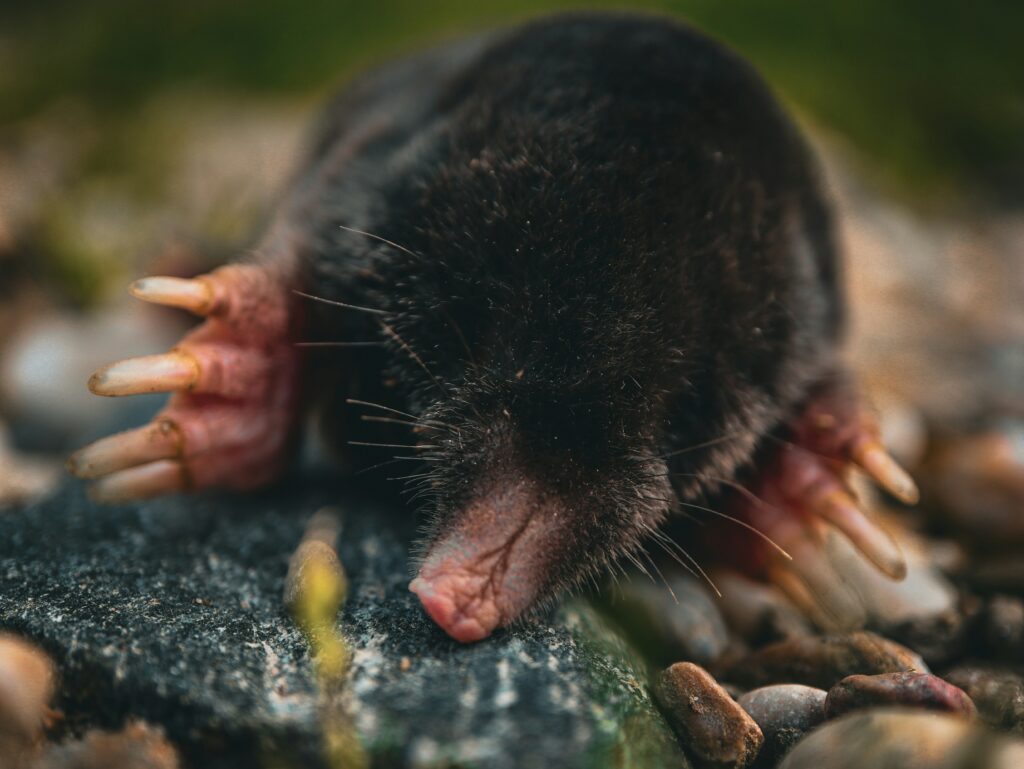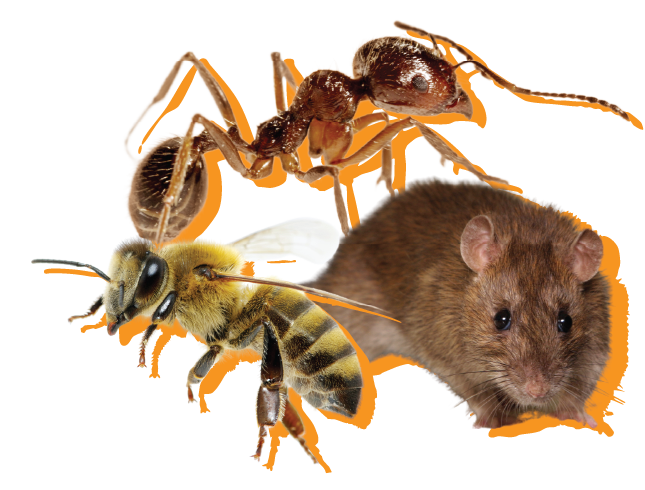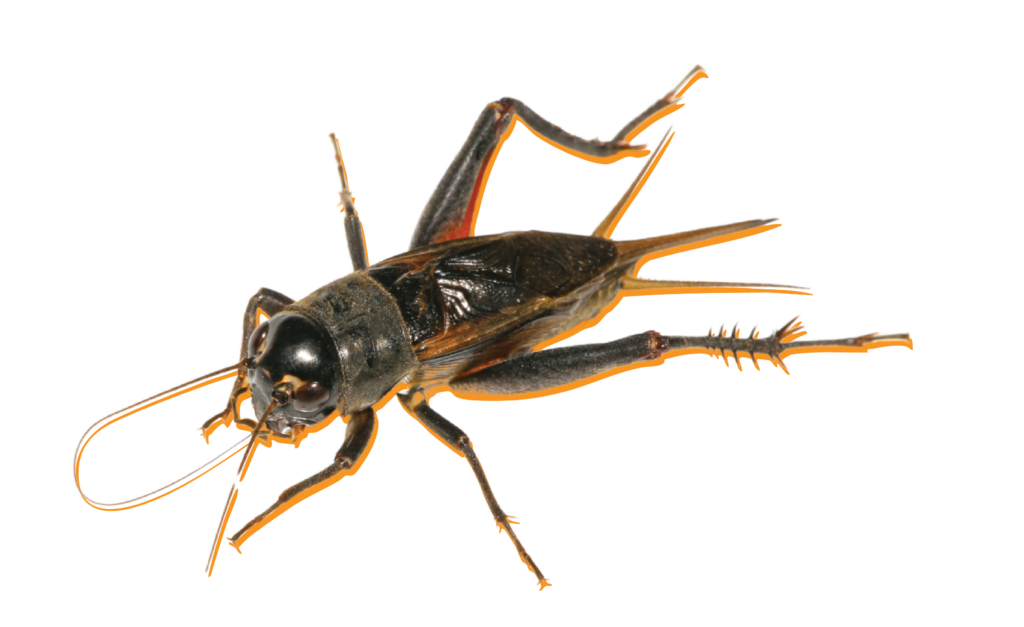Table of Contents
- Key Points
- Meet the Culprits: Moles vs. Groundhogs
- Identifying the Offender: Molehills vs. Groundhog Burrows
- Effective Mole and Groundhog Removal Strategies
- When to Call the Professionals
- Discouraging Future Intruders
- Reclaim Your Yard: We’re Here to Help
- References
Key Points
Spring has sprung, birds are singing, and your lawn and garden are…starting to resemble a miniature war zone. While the return of warmer weather is a welcome change, it also signals the re-emergence of some less-than-welcome guests: moles and groundhogs. These subterranean engineers can wreak havoc on your lawn and landscaping, leaving behind unsightly mounds, collapsing tunnels, and decimated vegetable patches.
At Precision, we understand the frustration and damage these critters can cause, along with the challenges involved in addressing them. That is why we have put together this comprehensive guide to help you identify these underground architects and explore effective strategies for their removal and prevention.
Meet the Culprits: Moles vs. Groundhogs
While both moles and groundhogs live underground and can damage your property, they are quite different creatures with distinct habits. Understanding these differences is the first step in tackling your specific pest problem.
Moles: Master Tunnel Builders
Imagine a tireless, subterranean torpedo, constantly excavating intricate networks beneath your feet. That is a mole in action. These small mammals (typically 5-8 inches long) are characterized by their velvety fur, tiny eyes (often hidden), and large, paddle-like front feet equipped with strong claws perfect for digging.
Key Characteristics of Moles:
- Diet: Moles are primarily insectivores, feeding on earthworms, grubs, and other soil-dwelling invertebrates. They are not typically interested in plants.1
- Sight and Hearing: Moles have poor eyesight but excellent senses of touch and hearing, allowing them to navigate their underground world.
- Damage: Primary damage by moles usually comes from their extensive tunneling. This creates raised ridges across your lawn, disrupts root systems (potentially killing grass and plants indirectly), and leaves behind volcano-shaped molehills. These tunnels can also create tripping hazards and make mowing difficult.
- Activity: Active year-round, though their tunneling may be less noticeable in frozen or very dry conditions. But don’t make a mountain out of molehill: they are solitary creatures, so even large number of hills does not necessarily mean a massive infestation.
Groundhogs: Voracious Vegetarians
Also known as woodchucks or whistle-pigs, groundhogs are significantly larger than moles, typically weighing between 5 and 11 pounds and reaching lengths of up to two feet. They are stout-bodied rodents with coarse fur, bushy tails, and strong claws adapted for digging and climbing.
Key Characteristics of Groundhogs:
- Diet: Groundhogs are primarily herbivores, with a particular fondness for garden vegetables, fruits, clover, and grasses. They can decimate your harvest in no time.2
- Damage: Groundhog damage includes large burrow entrances (typically 6-10 inches in diameter) with piles of excavated soil. These burrows can undermine foundations, patios, driveways, or other structures. Groundhogs also directly consume plants, so some homeowners have reported suspicions of the creatures gnawing on wood structures on their property.
- Activity: Groundhogs hibernate and are most active from early spring to late fall. You will likely see them foraging above ground during the day during these times of year, fattening up for their winter dormancy.
- Social Behavior: Like moles, groundhogs are generally solitary, except during mating season and when raising young.
Identifying the Offender: Molehills vs. Groundhog Burrows
Distinguishing between mole and groundhog activity is crucial for effective removal. Here is what to look for:
- Molehills: These are conical mounds of soil pushed up from the underground tunnels. They are often connected by raised ridges across the lawn. The entrance to the tunnel is usually not visible from the surface.
- Groundhog Burrows: These are larger, more obvious holes in the ground, typically with a clear entrance and a mound of excavated soil nearby. You might even see the groundhog entering or exiting the burrow.
Effective Mole and Groundhog Removal Strategies
Dealing with moles and groundhogs requires a strategic and often persistent approach. Here are some methods, ranging from preventative to professional intervention:

For Moles:
- Trapping: This is often considered the most effective method for mole removal. Several types of mole traps are available, including scissor-jaw traps and harpoon traps, which are strategically placed within active tunnels. Proper placement and understanding of mole tunnel systems are crucial for success. (Moles are not a protected species in South Carolina, so there are no restrictions on elimination methods.3)
- Baiting: Mole baits are available, but their effectiveness can be inconsistent as moles primarily feed on live invertebrates. If using bait, choose options specifically designed for moles and place them directly within active tunnels.
- Repellents: Some liquid and granular repellents are marketed for mole control. These often contain castor oil or other ingredients that are unpleasant to moles. However, their impacts can vary with soil conditions and be negatively effected by rainfall.
- Habitat Modification: Reducing their food source (grubs and earthworms) can sometimes discourage moles, but this can also negatively impact beneficial soil organisms. Improving drainage can also make your lawn less attractive to earthworms and, consequently, moles.
For Groundhogs:
- Live Trapping: Humane live traps baited with fruits, vegetables, or peanut butter can be effective. Once trapped, groundhogs should be relocated responsibly and legally. (There are also no South Carolina laws governing means of removing groundhogs from private property.)
- Lethal Trapping: In some situations, lethal trapping may be necessary for groundhog removal.
- Fencing: Installing a sturdy fence at least three feet high and buried one foot deep can help exclude groundhogs from gardens and vulnerable areas. The top of the fence should also have an overhang to prevent climbing.
- Habitat Modification: Removing brush piles, woodpiles, and other potential shelters can make your property less appealing to groundhogs.
- Repellents: Some commercially available groundhog repellents may offer temporary relief, but their effectiveness is often limited.
- One-Way Exits: “Exclusion” devices can be installed over burrow entrances, allowing groundhogs to exit but not re-enter. This method requires identifying all burrow entrances and ensuring they are the only way out.
When to Call the Professionals
While DIY methods can be useful, dealing with persistent mole and groundhog infestations can be challenging and time-consuming. Consider contacting the experts at Precision if:
- You are unsure about the type of pest you are dealing with.
- You have tried DIY methods without success.
- The infestation is extensive or causing significant damage.
- You prefer a safe, efficient, and guaranteed solution.
- You are uncomfortable handling traps or dealing with wildlife.
Our experienced technicians have the knowledge, tools, and techniques to effectively identify, remove, and prevent future mole and groundhog problems. We can assess your specific situation, develop a tailored treatment plan, and implement humane and effective solutions.
Discouraging Future Intruders
Once you have successfully removed the current inhabitants, taking preventative measures is crucial to avoid future infestations. Here are some tips:
- Maintain a Healthy Lawn: A thick, healthy lawn is less attractive to both moles and groundhogs. Proper fertilization, watering, and mowing can help.
- Manage Grub Populations: If you have a significant grub problem, consider implementing grub control measures, which may indirectly reduce mole activity.
- Remove Food Sources: For groundhogs, this means protecting your garden with fencing and promptly harvesting ripe fruits and vegetables.
- Eliminate Shelter: Remove brush piles, woodpiles, and other potential hiding places that could attract groundhogs.
- Install Barriers: Consider installing underground fencing or wire mesh around vulnerable garden areas to deter both moles and groundhogs.
Reclaim Your Yard: We’re Here to Help
Do not let moles and groundhogs turn your outdoor oasis into an obstacle course or a barren wasteland devoid of vegetation. By understanding their habits and implementing effective removal and prevention strategies, you can take back control of your property.
If you are struggling with a mole or groundhog problem in Anderson, Greenville, or the surrounding areas, do not hesitate to contact us. We are committed to providing safe, reliable, and effective pest control solutions, so you can enjoy your yard to the fullest. Call us today for a free consultation and estimate.
References
- “Moles,” National Wildlife Federation, retrieved on May 2, 2025, from: https://www.nwf.org/Educational-Resources/Wildlife-Guide/Mammals/Moles.
- “Fun Facts About Groundhogs,” U.S. Fish & Wildlife Service, retrieved on May 2, 2025, from: https://www.fws.gov/story/fun-facts-about-groundhogs.
- “Moles,” in South Carolina Species Information, South Carolina Department of Natural Resources, https://www.dnr.sc.gov/wildlife/publications/nuisance/moles.pdf.


